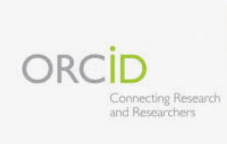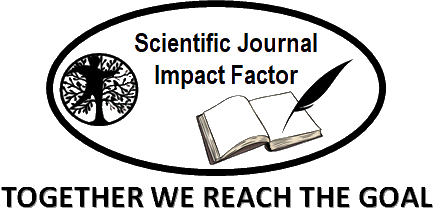Characteristics of enamel and the role of saliva as risk factors of dental caries
Abstract
Background: dental caries has multifarious origin. The enamel and saliva constitute essential barriers for resistance or access bridges for the development of dental caries.
Objective: to deepen in the theoretical knowledge about the micro and macro-structural characteristics of enamel and the role of saliva as risk factors of dental caries.
Methods: a bibliographic review was carried out from November 2017 to March 2018 in different data bases and printed texts. Twenty five bibliographical sources were used related to the given objective. Theoretical methods of research were used such as the logical historical for the introduction and discussion of the paper as well as the analytic and synthetic methods to carry out the conclusions of it.
Development: as more impermeable is the tooth enamels less will be the susceptibility of caries. The saliva provides calcium, phosphate and fluorine that allow to improve the enamel demineralization. The deep pits and fissures favor the entrance of cariogenic microorganisms and the acids accumulation from its metabolism and causer of dental caries. The salivary film promotes the microbial adherence of the enamel; however , the saliva constitutes an indispensable stronghold against dental caries due to its buffer and immunological actions, for the minerals supply to the maturation and remineralization of the enamel, its oral flora control and its self-cleaning action as long as its components, flow and volume are the appropriate.
Conclusions: the micro and macro-structural characteristics of the enamel and saliva constitute main factors that are related to the resistance or susceptibility of dental tissues to dental caries.
DeCS:DENTAL ENAMEL/pathology; SALIVA; DENTAL CARIES; DENTAL CARIES SUSCEPTIBILITY/etiology; RISK FACTORS.
Downloads
References
1. Pérez Quiñones JA, Duque de Estrada Riverón J, Hidalgo Gato- Fuentes I. Asociación del Estreptococos mutans y lactobacilos con la caries dental en niños. Rev Cubana Estomatol [Internet]. Dic 2007 [citado 02 Nov 2019];44(4):[aprox. p.]. Disponible en: http://scielo.sld.cu/scielo.php?script=sci_arttext&pid=S0034-75072007000400002&lng=es
2. Vilvey Pardillo LJ. Caries dental y el primer molar permanente. Gac Méd Espirit [Internet]. 2015 [citado citado 02 Nov 2019];17(2):[aprox. 14 p.]. Disponible en: http://revgmespirituana.sld.cu/index.php/gme/article/view/356
3. OMS. Salud Bucodental. Nota informativa [Internet]. Abr 2012 [citado 02 Nov 2019];(318):[aprox. 11 p.]. Disponible en: http://www.who.int/mediacentre/factsheets/fs318/es/.
4. Duque de Estrada Riverón J, Pérez Quiñonez JA, Hidalgo-Gato Fuentes I. Caries dental y ecología bucal, aspectos importantes a considerar. Rev Cubana Estomatol [Internet]. Mar 2006 [citado 02 Nov 2019];43(1):[aprox. 12 p.]. Disponible en: http://scielo.sld.cu/scielo.php?script=sci_arttext&pid=S0034-75072006000100007&lng=es
5. Cruz Quintana SM, Diaz Sjostrom P, Arias Socarras D, Mazon Baldeon GM. Microbiota de los ecosistemas de la cavidad bucal. Rev Cubana Estomatol [Internet]. 2017 [citado citado 02 Nov 2019];54(1):[aprox. 16 p.]. Disponible en: http://scielo.sld.cu/pdf/est/v54n1/est08117.pdf
6. Pedro Núñez D, García Bacallao L. Bioquímica de la caries dental. Rev Habanera Cienc Méd [Internet]. 2010 [citado 2 Nov 2019];9(2):[aprox. 11 p.]. Disponible en: http://scielo.sld.cu/pdf/rhcm/v9n2/rhcm04210.pdf
7. Nasco Hidalgo N, Gispert Abreu E, Roche Martínez A, Alfaro Mon M, Pupo Tiguero R. Factores de riesgo asociados a lesiones incipientes de caries dental en niños. Rev Cubana Estomatol [Internet]. Dic 2013 [citado 03 Nov 2019];50(2):[aprox. 9 p.]. Disponible en: http://www.revestomatologia.sld.cu/index.php/est/article/view/190/16
8. Gispert Abreu E, Nasco Hidalgo N. Caracterización de la caries dental. En: González Naya G, Montero del Castillo ME, editores. Estomatología General Integral. La Habana: Editorial Ciencias Médicas; 2013. p.58.
9. Barranco Money J, Rodríguez GA. Cariología. En: Barranco Money J, editor. Operatoria dental. Argentina: Editorial Médica Panamericana;1999. p.239.
10. Barberán Díaz Y, Bruzón Díaz AM, Torres Silva M del C, Rodríguez Corona O. Factores de riesgo de urgencias por caries dental en pacientes de Rafael Freyre. CCM [Internet]. Mar 2016 [citado 06 Nov 2019];20(1):[aprox. 10 p.]. Disponible en:
http://scielo.sld.cu/scielo.php?script=sci_arttext&pid=S1560-43812016000100004&lng=es
11. Sánchez Montero D, Pons López Y, Betancourt García A, Santateresa Marchante A. Pérdida del primer molar permanente: factores de riesgo y salud bucodental en adolescentes. Rev Finlay [Internet]. Mar 2017 [citado 02 Nov 2019];7(1):[aprox. 9 p.]. Disponible en:
http://scieloprueba.sld.cu/scielo.php?script=sci_arttext&pid=S2221-24342017000100004&lng=es
12. Guías prácticas de estomatología [Internet]. La Habana: Editorial Ciencias Médicas; 2003 [citado 06 Nov 2019]. Disponible en: https://www.academia.edu/36680221/Gu%C3%ADas_Pr%C3%A1cticas_de_Estomatolog%C3%ADa
13. Rosa Samper H de la, Veitía Cabarroca F, Lemus Correderas IG, Morales Aguiar DR, Nasco Ríos C, Toledo Pimentel B, et al. Diagnóstico, pronóstico y tratamiento de la enfermedad periodontal inflamatoria aguda. En: Compendio de Periodoncia. La Habana: Editorial Ciencias Médicas; 2006. p. 169-200.
14. Álvarez González M. Glosario de términos estomatológicos. 2da ed. La Habana: Editorial Ciencias Médicas; 2017.
15. Espinosa Quirós D, Dovale Borges A, Gámez Fonseca M. Morfofisiología de la boca, la faringe y el esófago. En: Castillo Guerrero LM, González Aguilar V, Espinosa Quirós D, González Jardínez M, Nuñez López N, Milán Campanioni D, et al. Morfofisiología. La Habana: Editorial Ciencias Médicas; 2015. p.329-330.
16. Zini Carbone CNH, González MM, Martínez SE. La saliva: una mirada hacia el diagnóstico. Rev Ateneo Argent Odontol [Internet]. 2016 [citado 19 Ene 2018];55(2):[aprox. 5 p.]. Disponible en: https://www.ateneo-odontologia.org.ar/articulos/lv02/articulo6.pdf
17. González Martínez FD, Vidal Madera AM, Tirado Amador LR. Relación entre obesidad y caries dental en niños. Rev Cubana Estomatol [Internet]. Mar 2014 [citado 02 Nov 2019];51(1):[aprox. 14 p.]. Disponible en: http://scieloprueba.sld.cu/scielo.php?script=sci_arttext&pid=S0034-75072014000100010&lng=es
18. Velásquez Sáez C, Salinas Villanueva I, Godoy Martínez P, Muñoz Martínez H, Barría Pailaquilén RM. Recuento en saliva de Streptococcus mutans en niños de 6 a 12 años con y sin tinciones cromógenas. Av Odontoestomatol [Internet]. Abr 2017 [citado 02 Nov 2019];33(2):[aprox. 9 p.]. Disponible en: http://scielo.isciii.es/scielo.php?script=sci_arttext&pid=S0213-12852017000200004&lng=pt
19. Malagón I. Afecta el alcohol a tus dientes. Clinic [Internet]. Abr 2016 [citado 02 Nov 2019]. Disponible en: https://www.ivanmalagonclinic.com/noticias/como-afecta-el-alcohol-a-tu-salud-oral/.
20. Pereda Rojas ME, González Vera FE. Comportamiento del tabaquismo y la deficiente higiene bucal como factores de riesgo de la caries dental. CCM [Internet]. Dic 2014 [citado 02 Nov 2019];18(4):[aprox. 14 p.]. Disponible en: http://scielo.sld.cu/scielo.php?script=sci_arttext&pid=S1560-43812014000400004&lng=es
21. Chaple Gil AM. Generalidades sobre la mínima intervención en cariología. Rev Cubana Estomatol [Internet]. Jun 2016 [citado 02 Nov 2019];53(2):[aprox. 8 p.]. Disponible en: http://scieloprueba.sld.cu/scielo.php?script=sci_arttext&pid=S0034-75072016000200007&lng=es












